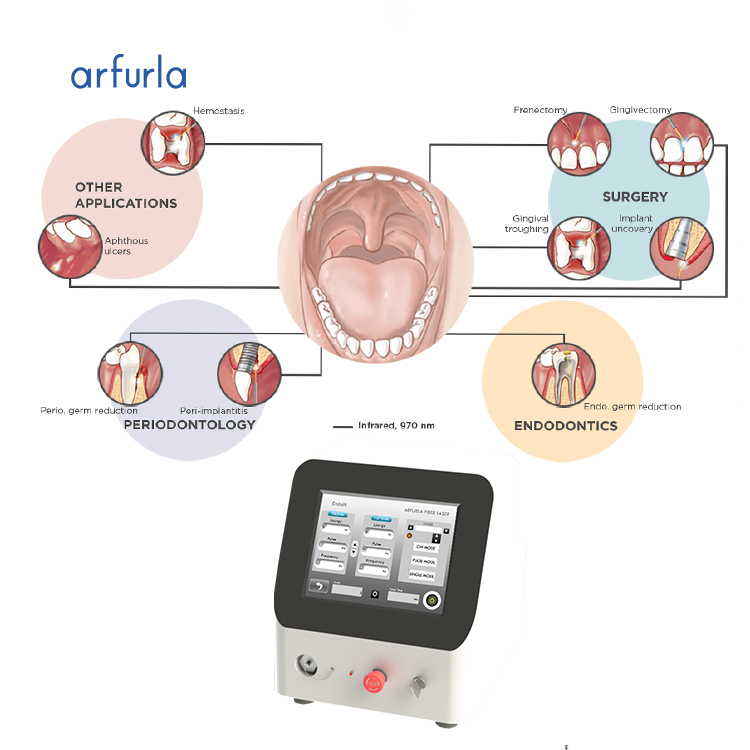
Product Details
Arfurla Dentistry Laser Treatment Dental Diode Laser Soft Tissue
What is the principle of diode lasers for oral soft tissue treatment?
The diode laser dentistry with a wavelength of 980nm irradiates biological tissue and can be converted into heat energy absorbed by the tissue, resulting in biological effects such as coagulation, carbonization, and vaporization.
In dental applications, diode lasers utilize these photobiological effects to manage oral pathologies. At lower power settings, targeted irradiation induces protein coagulation and denaturation in both tissues and bacterial cells. This mechanism provides dual therapeutic benefits: when applied to ulcerated areas, it alleviates pain by modifying nerve endings and accelerates healing through tissue protein modulation. Similarly, when directed into periodontal pockets, the laser’s antibacterial action eliminates pathogens while establishing a microenvironment that promotes periodontal tissue regeneration.
When the dental laser power is increased, the optical fiber after initiation treatment will converge to form a very thin beam on the surface of the tissue, and the high temperature generated can vaporize the tissue to achieve the cutting effect. At the same time, the protein in the blood denatures and coagulates after being heated, which plays the role of hemostasis.
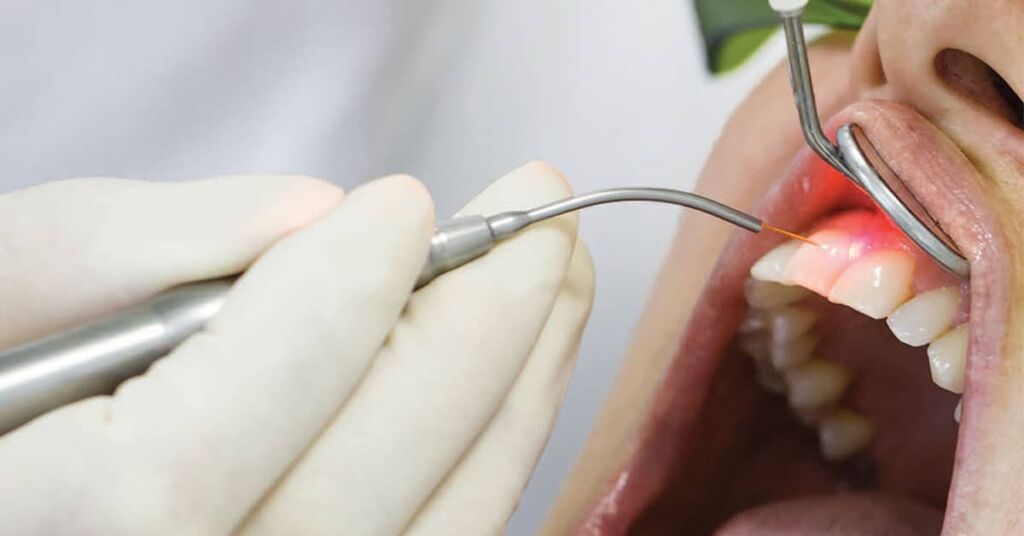
The diode laser dental treatment, It can also cut the soft tissue very fast and smoothly with less blood and less pain than ordinary dental surgery device. Aside from an application in soft tissue surgery, it is also used for other treatments such as decontamination, biostimulation and tooth whitening.
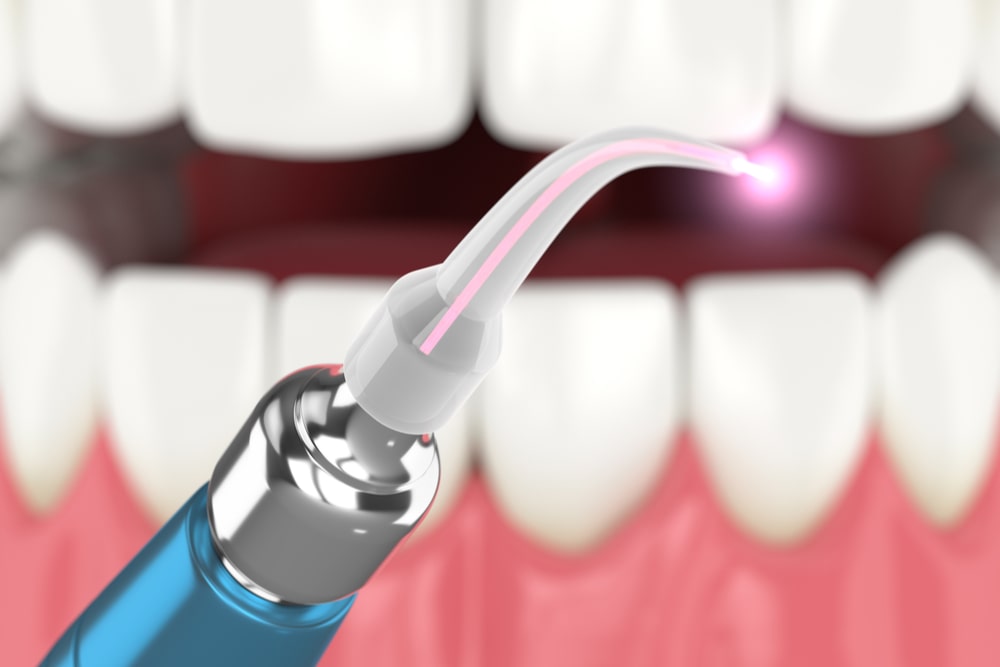
Indications Of Use Laser dental Dentistry Treatment
Soft tissue procedures laser dentistry
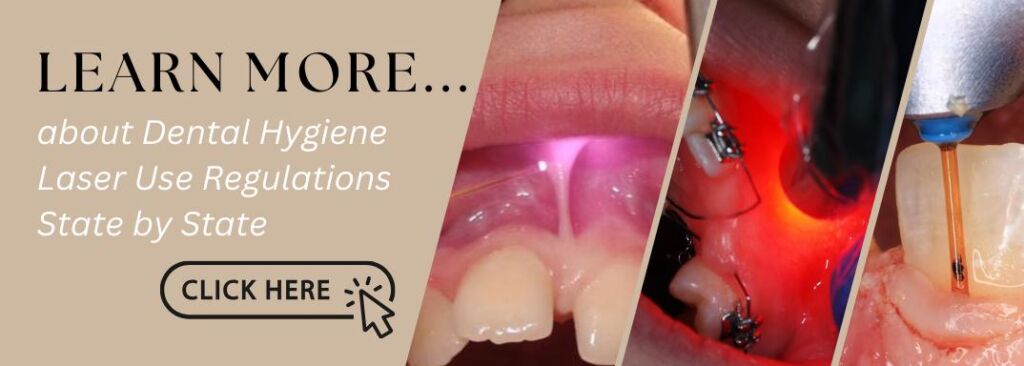
Gingival Troughing for Crown Impressions
Gingivectomy & Gingivoplasty
Gingival Incision & Excision
Soft-Tissue Crown Lengthening
Hemostasis & Coagulation
Fibromal Removal
Incision & Drainage of Abscess
Oral Papillectomies
Reduction of Gingival Hypertrophy
Treatment of Canker Sores, Herpetic & Aphthous Ulcers of the Oral Mucosa
Peridontal procedures laser dentistry
Sulcular Debridement (Removal of Diseased, Infected, Inflamed, & Necrosed Soft-Tissue in the Periodontal Pocket to Improve Clinical Indices Including Gingival Index, Gingival Bleeding Index, Probe Depth, Attachment Loss, & Tooth Mobility)
Laser Soft-Tissue Curettage
Laser Removal of Diseased, Infected, Inflamed & Necrosed Soft-Tissue Within the Periodontal Pocket
Removal of Highly Inflamed Edematous Tissue Affected by Bacteria Penetration of the Pocket Lining & Junctional Epithelium

Laser teeth whitening laser dentistry
Laser Assisted Whitening/Bleaching of Teethure.
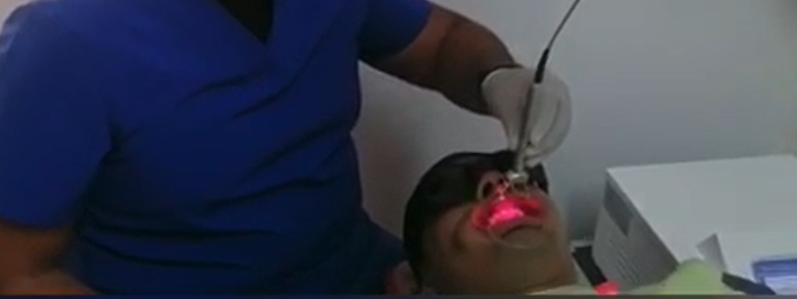
Advantages In Dentistry With Dental Lasers 980nm 1470nm
- Minimal bleeding, swelling No Blood Loss for Surgery, Faster healing
- Optical coagulation: Seal blood vessels without thermal cauterization or carbonization, Minimal or no suturing
- Cut and coagulate more precisely at same time
- Avoid collateral tissue damage , increase tissue-protecting surgery
- Minimize post-operative inflammation and discomfort
- Controlled depth of laser penetration accelerated patient healing
- Increase patient turnover rates with more efficient laser procedures,Reduction in surgical time, Less drug intervention
- Reduce patient discomfort and the need for anesthetic
- Effective Treatment of Oral Therapy,Little or no gingival recession
- Sensitivity is Detected On Time,Less or no pain
- Dental Cosmetic Usage, Tooth Whitening
